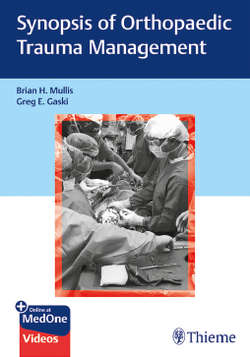Читать книгу Synopsis of Orthopaedic Trauma Management - Brian H. Mullis - Страница 56
На сайте Литреса книга снята с продажи.
II. Treatment of Nonunions
ОглавлениеA. The critical factor in finalizing a treatment plan is determining the cause of the nonunion and trying to counteract it.
1. Nonunion repair requires both the appropriate biology and the necessary mechanical stability for fracture healing.
2. The cause of nonunion can be multifactorial.
B. A comprehensive treatment is necessary to maximize chances of a successful outcome and minimize risks of complications.
C. If needed, it is imperative to consult with other specialists including infectious disease, general medicine, and endocrinology, among others.
D. Preoperative planning
1. Adequate imaging will be the foundation of the treatment plan.
2. From the imaging and previous records, it is critical to determine what, if any, implants are retained.
3. If the types of implants are unknown, the surgeon must be equipped to deal with any removal necessary to achieve the objectives of the operation.
4. With that in mind, it is important to minimize the destruction of the surrounding bone and soft tissue, if removing an implant is not critical to the success of the operation. Operative principles for most nonunions include:
a. Exposure and debridement at the fracture site (may not be required if hypertrophic).
b. Supplementation with biologic augments as needed. Autogenous bone graft, demineralized bone matrix, bone marrow aspirate.
c. Rigid fixation—IM nails, plates and screws, or multiplanar external fixator.
d. Preservation of soft tissues.
e. Adequate treatment of known risk factors to provide an optimal chance at recovery.
f. A frank understanding of the surgeon’s limitations and abilities so that the patient is not subjected to undue risk.
g. As a general rule:
i. Hypertrophic nonunions require increased stability and rarely any biological augmentation.
ii. Atrophic nonunions require biologic augmentation and typically some adjustment in mechanical stability such as compression at the fracture site to reduce gaps (▶Fig. 7.2).
5. Biologic augments:
There are three basic properties:
a. Osteoconductive—the graft acts as a structural frame for bone growth.
b. Osteoinductive—stimulates bone growth by the induction of stem cells.
c. Osteogenic—contain cells that promote bone healing.
Classes of Bone Graft (Refer to Chapter 8, Biologics, for additional information).
